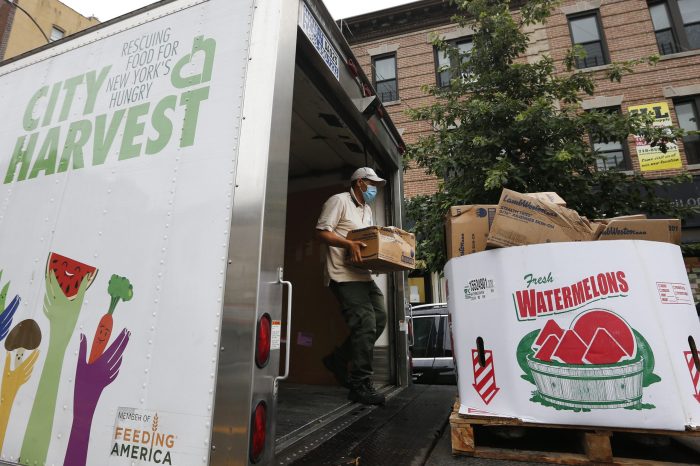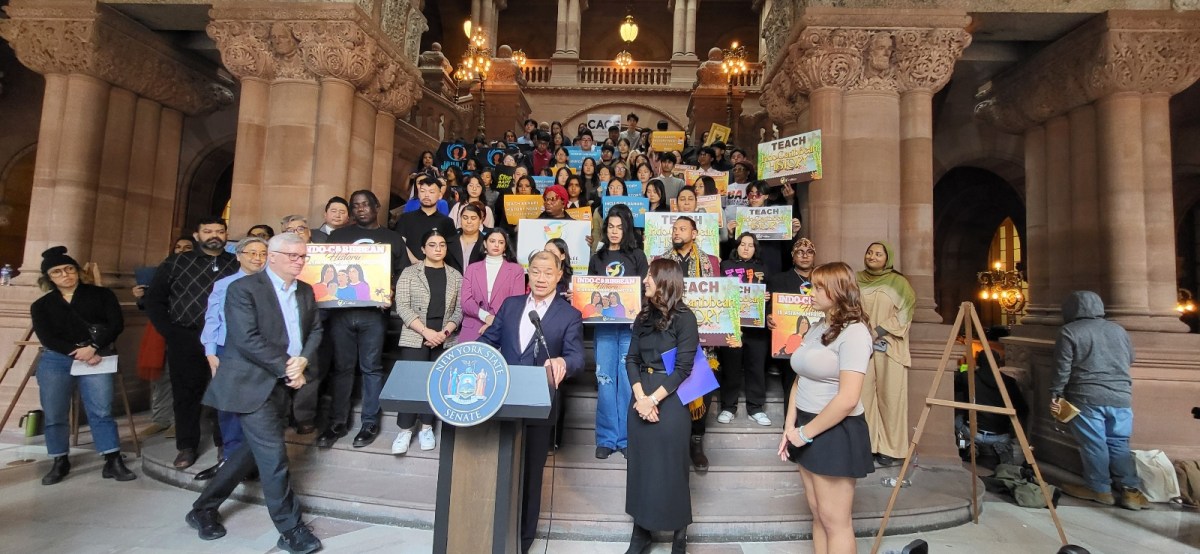NYC food pantries are becoming flooded with an unexpected clientele: full-time working New Yorkers who still cannot afford to put bread on their tables.
The anti-poverty advocacy group Robin Hood released its annual food insecurity report on Monday, showing an alarming trend: One in three adults (31%) and nearly half of families with children (44%) experienced food hardship in 2023.
According to the report, dubbed the 2024 Poverty Tracker, which examined food pantry use from 2015 to 2023, the number of employed New Yorkers who visit pantries soared from 5% in 2019 to a shocking 11% in 2023.
“As the city’s affordability crisis deepens, more New Yorkers, including workers and parents, are forced to make impossible choices between food, housing and other essentials,” said Richard Buery, Jr., CEO of Robin Hood.
According to the report, two in three pantry users in New York worked in recent years, and a large majority of those (71%) worked consistently over a three-year period. The study was conducted in collaboration with Columbia University’s Center on Poverty and Social Policy and its Population Research Center.
Meanwhile, New Yorkers who receive SNAP benefits — a federal program to help low-income families afford food — are turning out less often at local pantries. The Robin Hood report shows the percentage of pantry users receiving food assistance benefits like SNAP dropped from 66% in pre-COVID-19 pandemic times to 44% in the years since.
The reason for the flip? In large part, many New Yorkers with jobs earn too much to receive financial assistance but too little to afford groceries regularly.
“This year’s spotlight on food assistance is a sobering reflection of a city where half the population either lives in poverty or is one missed paycheck away from it,” Buery said. “The data is a clear call for stabilizing supports like cash assistance, wage increases and eligibility reforms to SNAP, all to better ensure New Yorkers most in need are adequately fed.”
The grocery bill is too damn high
Most New Yorkers would not be surprised at the results of the report. The price tags on food staples at local supermarkets show inflation — and possibly price gouging — has not improved much since the start of the pandemic:
Dozen large eggs: $4.99, Stop & Shop, Brighton Beach, Brooklyn
Rice Krispies, family size box: $9.99, Key Food, Woodside, Queens
Arnold Country Style Whole Wheat Bread: $5.29, ShopRite, North Shore, Staten Island
Store brand gallon of milk: $4.29, Stop & Shop, Kingsbridge, the Bronx
One russet potato: $0.99, Trader Joe’s, Chelsea, Manhattan
The new look of hunger
Matt Jozwiak, co-founder and CEO of Rethink Food, which connects excess food in restaurants to people in need, said NYC has a new look of hunger, which is far from the “long bread lines of the 1920s.”
His organization partners with cafes, delis and restaurants to prepare and deliver more than 30,000 meals weekly to local community-based organizations in all five boroughs.
“Restaurants provide so many benefits to neighborhoods because the people who work there get to eat for free,” Jozwiak said. “Almost every restaurant in the city has at least one free meal daily for the staff. If you take all the restaurants in NYC and put it together, that would probably be the biggest food insecurity nonprofit in New York.”
Jilly Stephens, CEO of City Harvest, said people come to food pantries not only because of the high cost of groceries. Other challenges, such as child-care costs and affordable housing, fuel the trend.
She said that soup kitchens and pantries that partner with City Harvest are seeing a shocking one million more visits each month than before the pandemic.
“High costs for food, child care, and housing make it increasingly difficult for New Yorkers to put food on their tables,” she said. “The report reveals that a majority of people who visit food pantries have jobs, an indication that wages cannot keep up with the high cost of living in New York City.
Robin Hood researchers said policy decisions at the federal and state levels could determine whether pantry use returns to pre-pandemic levels.





































